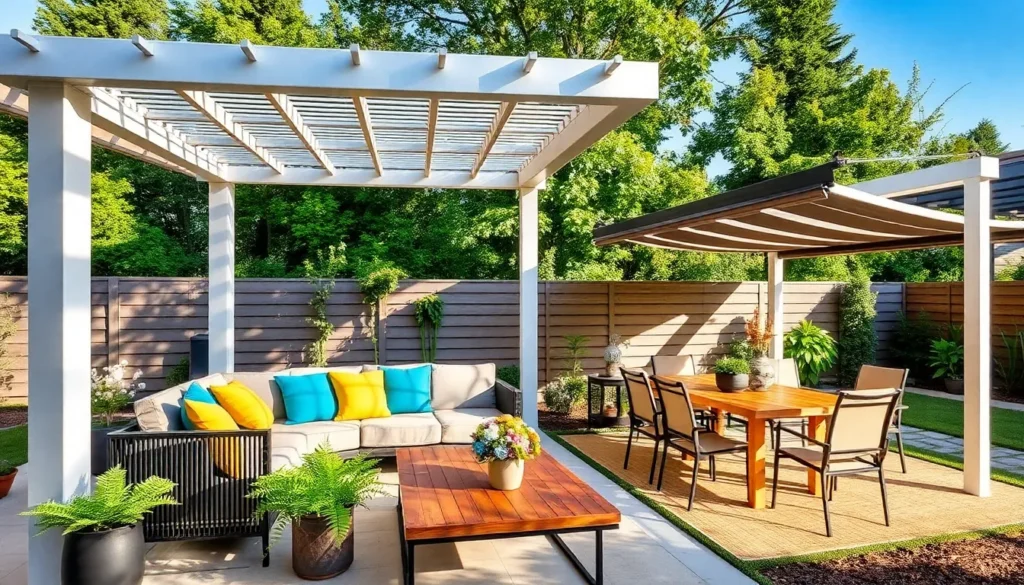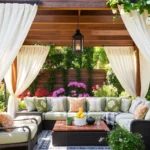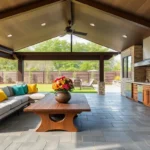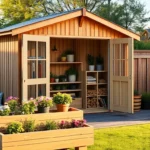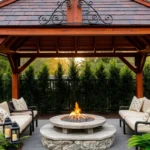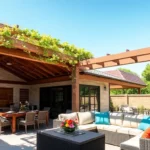Imagine stepping into your backyard and feeling like you’ve entered an extension of your home, where the boundaries between indoors and outdoors blur seamlessly. Whether you’re a novice eager to transform your patio into a cozy retreat or a seasoned homeowner looking to revamp your outdoor space, a modern patio cover can be the perfect solution to elevate your outdoor living experience. These covers not only provide essential shade and shelter but also add a stylish flair that can redefine your home’s exterior.
In this article, we’ll explore 12 innovative patio cover designs that cater to a variety of tastes and needs, from sleek minimalist structures to more elaborate, dynamic installations. You’ll discover how these designs can enhance your space, offering practical tips and creative inspiration to suit your unique lifestyle. So, get ready to dive into a world where your patio becomes a personal haven, tailored perfectly to your vision and needs.
Embracing Minimalist Pergola Designs
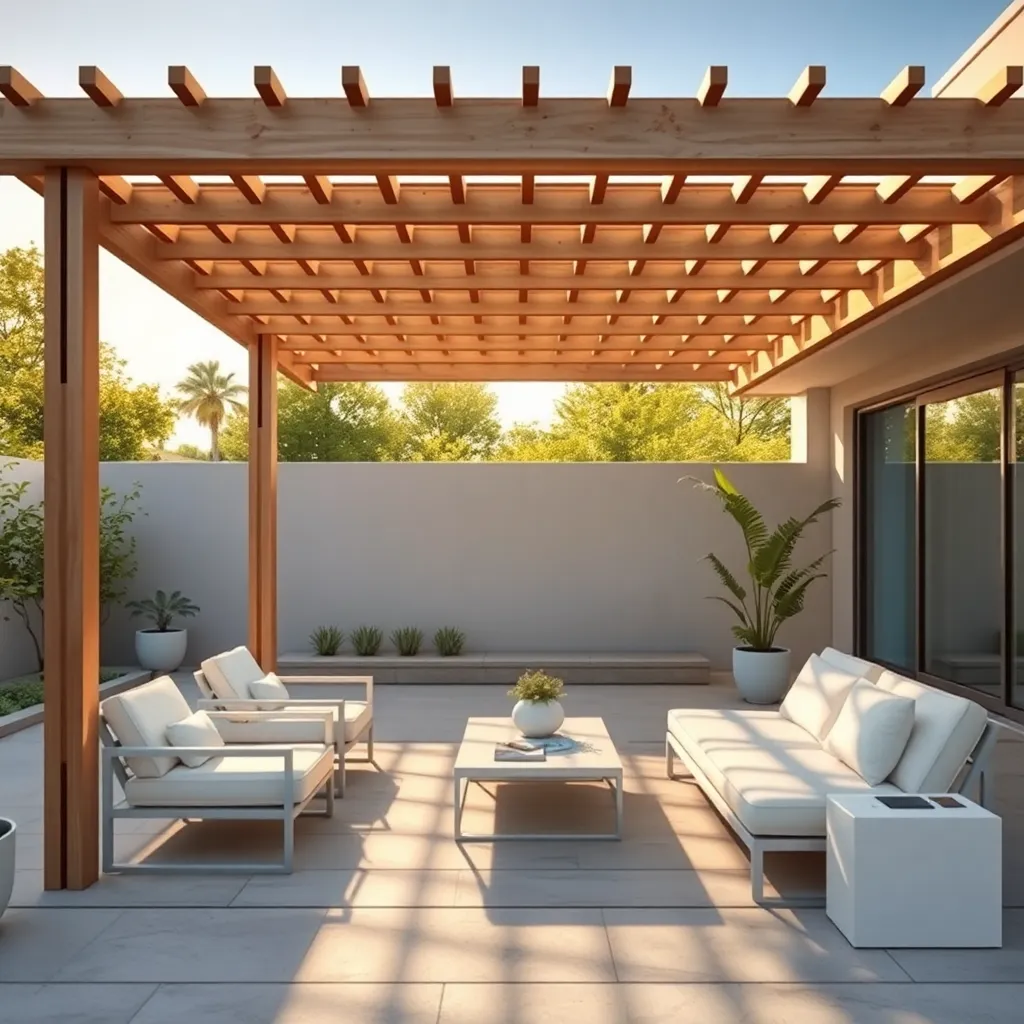
Minimalist pergola designs are perfect for those who appreciate clean lines and a clutter-free aesthetic. To achieve this look, choose materials like lightweight aluminum or sustainably sourced wood that offer both durability and elegance. For a basic setup, consider a freestanding structure with a simple rectangular shape, ensuring the dimensions complement your patio space—typically, a 10×10-foot area is a versatile choice. Beginners should focus on straightforward designs with fewer decorative elements, while more experienced DIYers might incorporate adjustable louvers or integrated lighting for added functionality.
Incorporating minimalist elements, such as neutral color palettes and streamlined beams, enhances the simplicity of your pergola. Opt for shades like white, gray, or natural wood tones to maintain a cohesive and understated atmosphere. If you’re seeking an advanced touch, consider installing a retractable fabric canopy or motorized shades for added comfort and sun protection. For a touch of greenery, train climbing plants like wisteria or jasmine to weave through the structure, offering natural shade and a hint of color without overwhelming the minimalist design.
Exploring Retractable Canopy Options
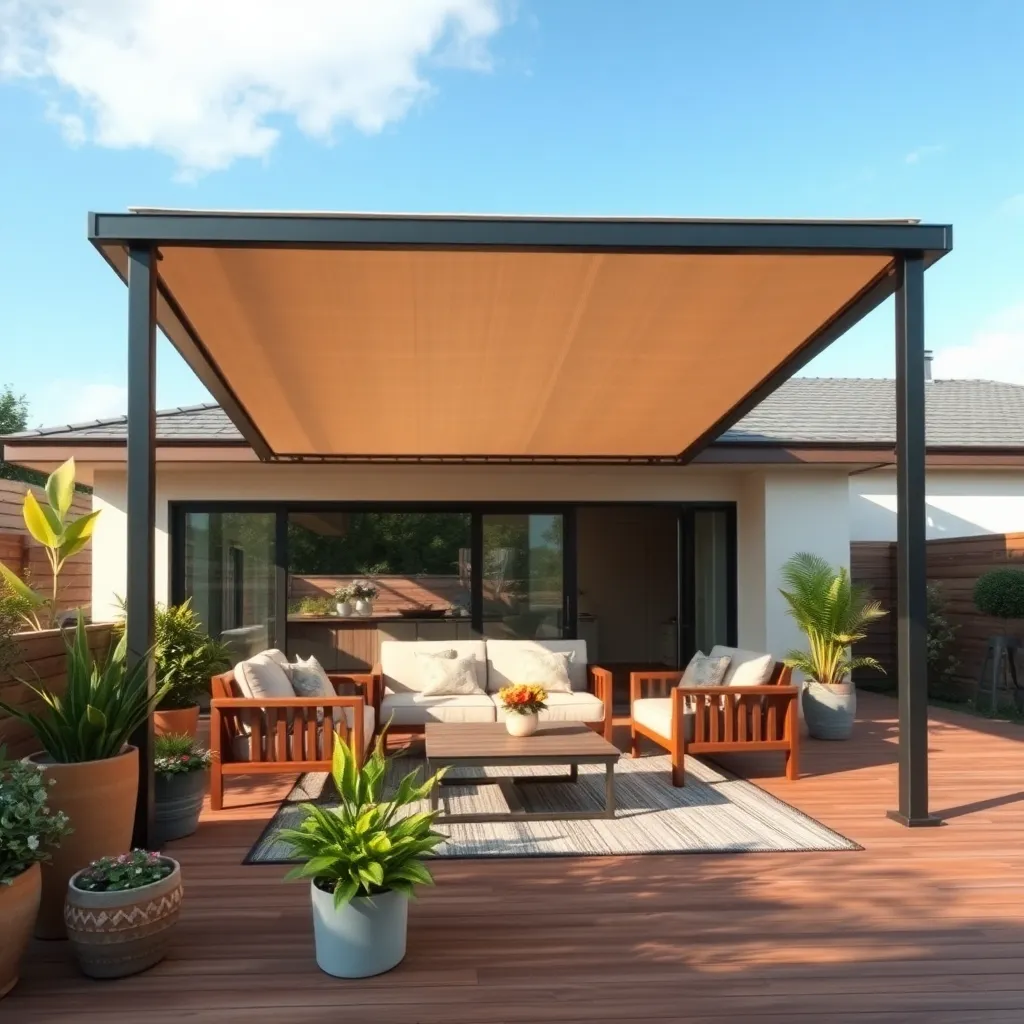
Retractable canopies are a versatile option for homeowners seeking flexibility in their outdoor spaces. These canopies provide the perfect balance between shade and sunlight, allowing you to adjust coverage based on the weather or your preference. For beginners, a basic model with a manual crank mechanism offers ease of use and affordability. Advanced users might consider motorized options with remote control features, offering convenience and seamless integration with smart home systems. When choosing materials, opt for UV-resistant fabrics like acrylic or polyester that can withstand varying weather conditions while maintaining vibrancy and durability.
When planning your retractable canopy installation, consider the space where it will be used. Ensure the structure is mounted securely on a sturdy frame, like aluminum or steel, which provides long-lasting support. Measure your patio area accurately to determine the optimal size, allowing for a slight overhang to maximize coverage. For added flair, integrate LED lights along the canopy’s edges to extend usability into the evening. This simple yet effective upgrade not only enhances the ambiance but also increases functionality. With these practical tips, you’ll create a stylish and adaptable outdoor haven that can be enjoyed year-round.
Incorporating Natural Wood Elements
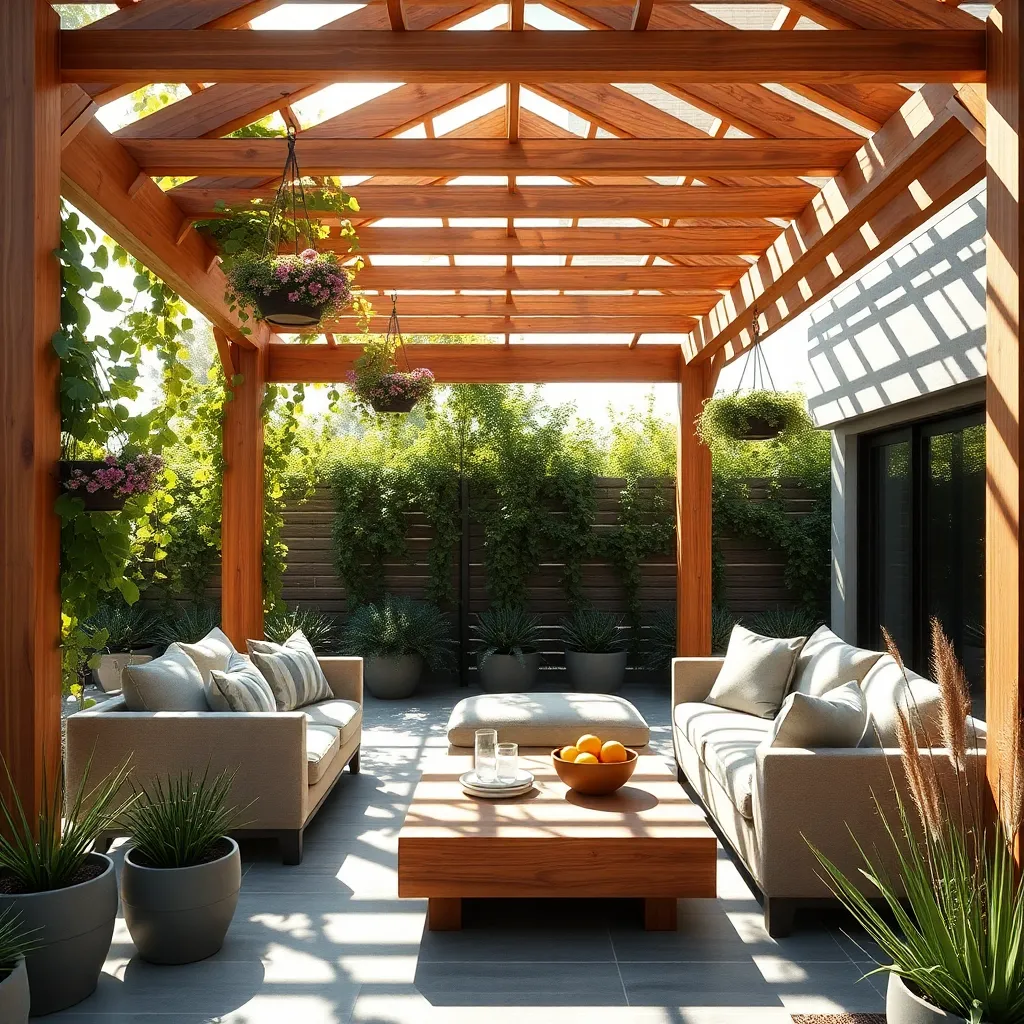
Incorporating natural wood elements into your patio cover design can blend modern aesthetics with a warm, inviting atmosphere. Start by selecting durable wood types like cedar, redwood, or teak, which offer both beauty and weather resistance. For beginners, a simple pergola design can be a great start, using pre-cut kits available at most home improvement stores. Ensure all wood is treated for outdoor use to prevent rot and insect damage, extending the life of your structure.
To enhance the modern look, consider integrating sleek metal brackets or stainless steel cables to provide contrast and structural support. Advanced DIYers can opt for a louvered wood pergola, which allows for adjustable sunlight control, creating a dynamic outdoor space. Precision in measurements is key; ensure your beams and posts are evenly spaced for both aesthetic appeal and stability. For those looking to add a personal touch, incorporating climbing plants like wisteria or jasmine can further merge the built environment with nature.
Maximizing Light with Glass Covers
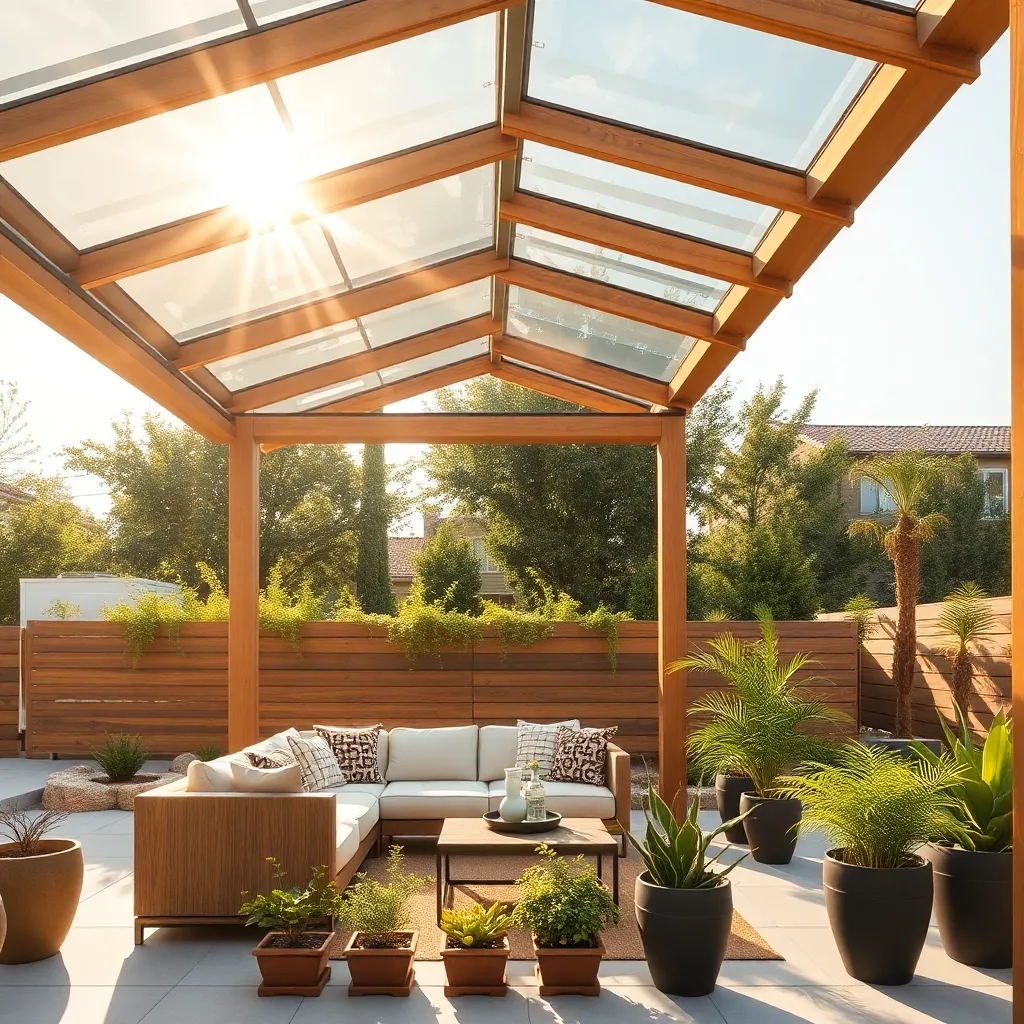
Adding glass covers to your patio design can significantly enhance the amount of natural light while still providing protection from the elements. For beginners, consider using tempered glass panels, which are both durable and safe. These panels can be installed in a grid pattern using metal or wooden frames for a modern aesthetic. Ensure the glass is high-quality and UV-resistant to prevent fading of furniture and maintain a comfortable temperature underneath.
For those looking for advanced customization, incorporating features like retractable glass panels can offer flexibility in how much light and air you allow in. Use a sliding track system to easily open or close sections as desired. Opt for glass with a solar control coating to manage heat gain during hotter months. Additionally, installing integrated LED lighting around the perimeter can create a stunning evening ambiance, allowing you to enjoy your patio day and night.
Enhancing Privacy with Lattice Panels
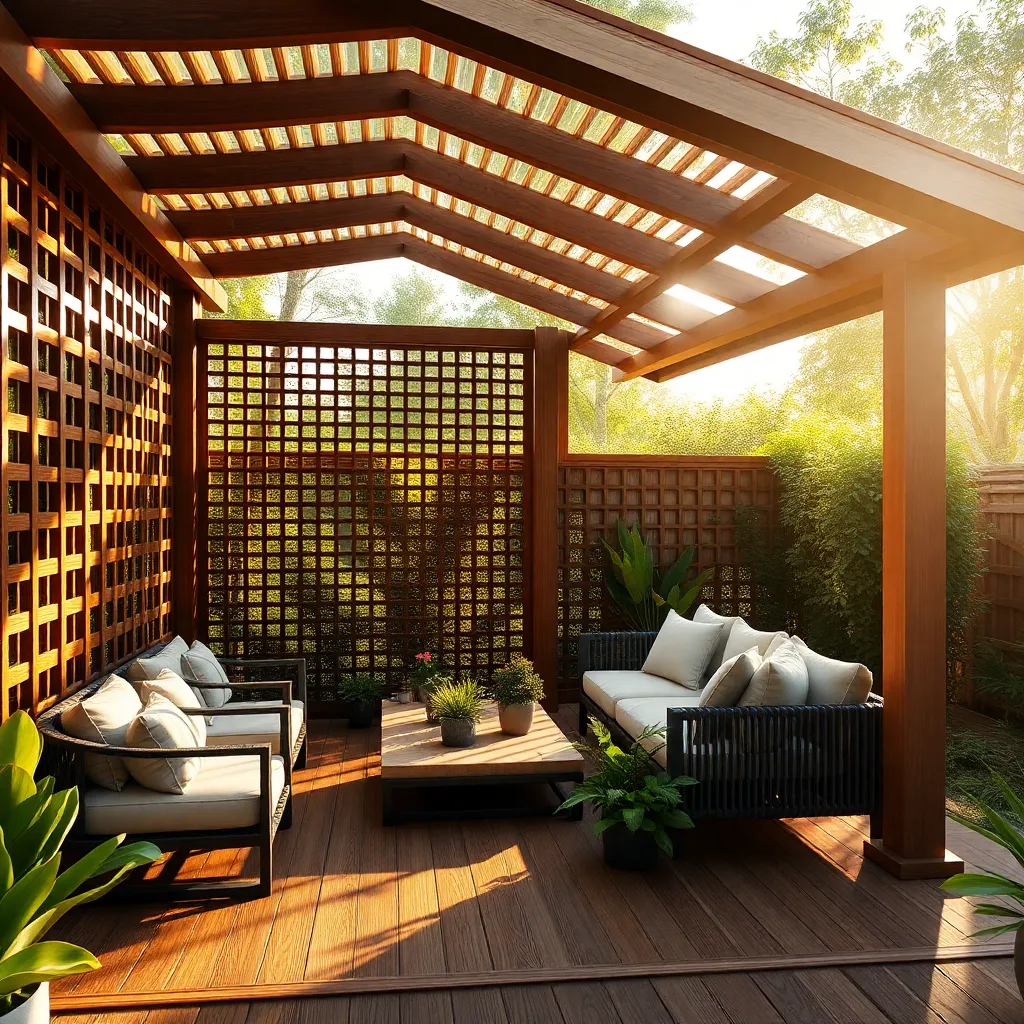
Lattice panels are an excellent choice for enhancing patio privacy while maintaining an open and airy feel. These panels come in various materials like wood, vinyl, and metal, allowing you to choose one that complements your patio design and budget. To create a cozy and private space, consider using lattice panels as a border around your patio or as a backdrop for seating areas. For beginners, a basic wooden lattice panel installation can be a weekend project, requiring standard tools and basic carpentry skills.
For those looking to add a touch of greenery, consider weaving climbing plants like clematis or jasmine through the lattice for an added layer of privacy and natural beauty. More experienced DIYers might explore custom lattice designs or incorporate integrated lighting to enhance their evening ambiance. Ensure panels are securely anchored by using sturdy posts and brackets, especially in areas prone to wind. Recommended dimensions are typically 4×8 feet per panel, but these can be cut to fit your specific needs, providing a personalized touch to your outdoor retreat.
Integrating Built-In Lighting Features
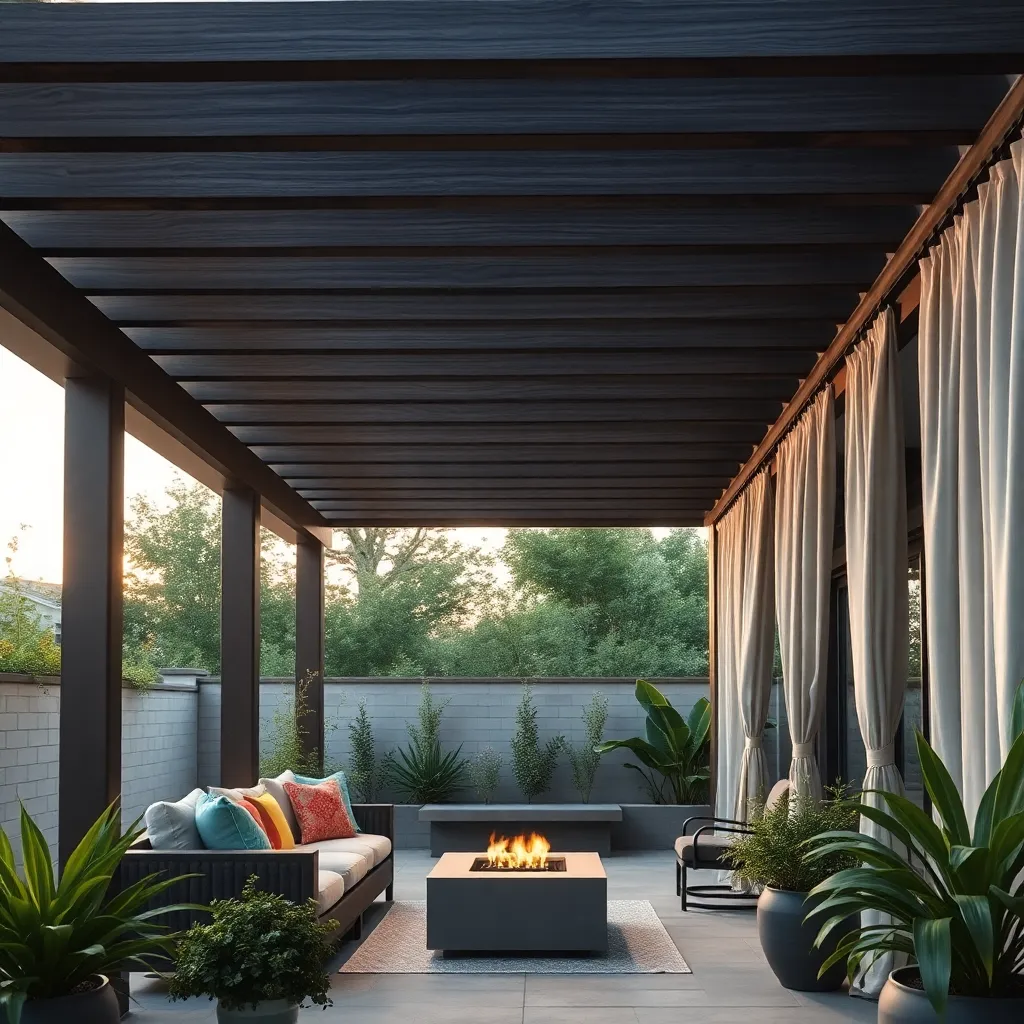
Integrating built-in lighting features into your patio cover can transform your outdoor space into a functional and inviting area, day or night. Start by considering **LED strip lights**, which are energy-efficient and versatile. Install them along the edges of beams or under the cover to create a soft, ambient glow. For a more modern touch, consider recessed lighting fixtures that blend seamlessly with the ceiling, providing a sleek and unobtrusive look. **Choose weather-resistant materials** to ensure durability and longevity, especially in exposed outdoor environments.
For those seeking a more personalized touch, consider incorporating **smart lighting systems** that allow you to adjust brightness and color with a smartphone app. This not only adds convenience but also enhances the ambiance to suit any occasion. When planning your design, ensure that the electrical components are properly rated for outdoor use and comply with local safety regulations. **Work with a qualified electrician** to safely integrate these features into your patio cover, ensuring both aesthetics and functionality are optimized.
Choosing Eco-Friendly Shade Solutions
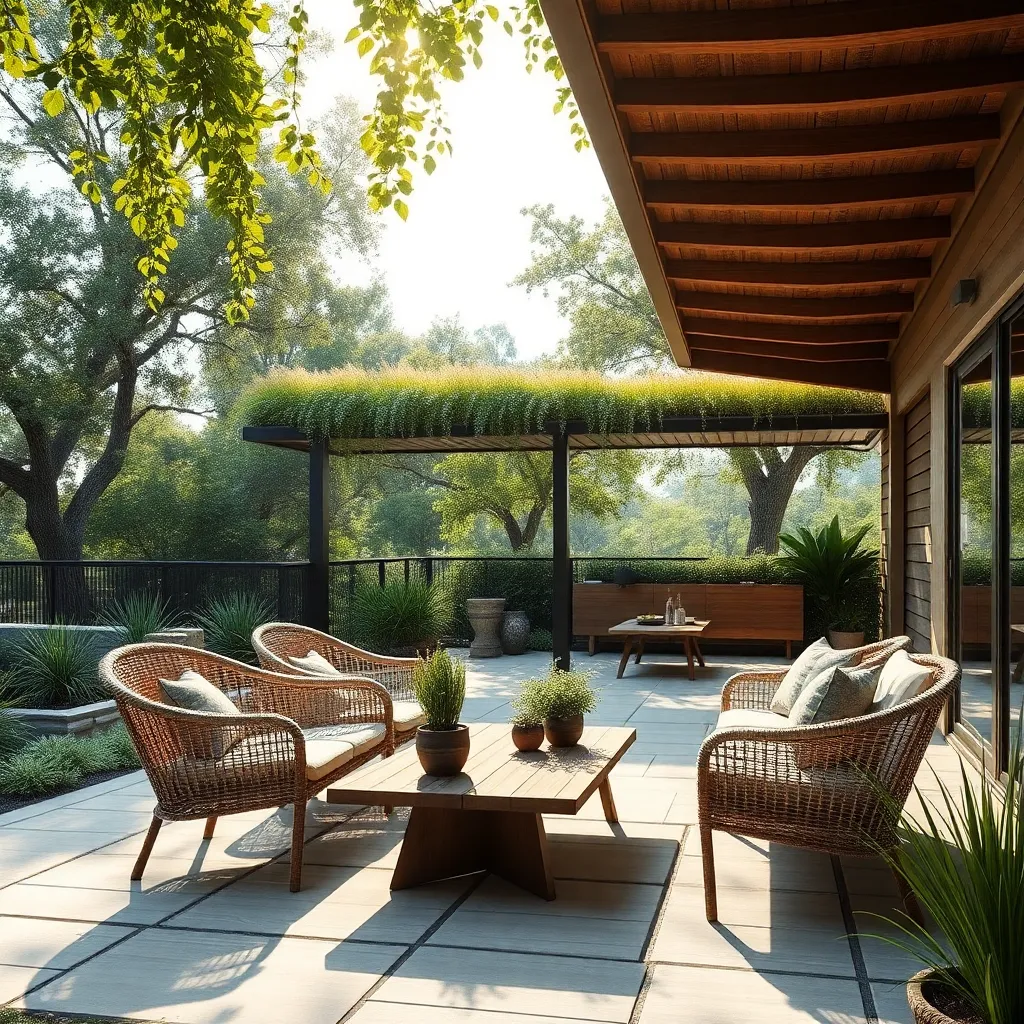
For an eco-friendly patio cover, consider using bamboo as a sustainable material. Bamboo is not only fast-growing and renewable but also incredibly durable. When constructing your shade solution, opt for a simple pergola design and use sustainable bamboo slats for the roofing. This allows for filtered sunlight while reducing your environmental footprint. For beginners, ensure to select bamboo treated for outdoor use to enhance its longevity and weather resistance.
Another effective option is to incorporate recycled materials into your shade design. Using reclaimed wood or metal can give a rustic or industrial look while being environmentally responsible. Create a fabric canopy using recycled sailcloth, which is both durable and resistant to weather conditions. For those ready to take on a more advanced project, consider installing solar panels on the roof of your structure to harness energy and provide power for outdoor lighting, further enhancing the eco-friendliness of your patio cover.
Utilizing Adjustable Louvered Systems
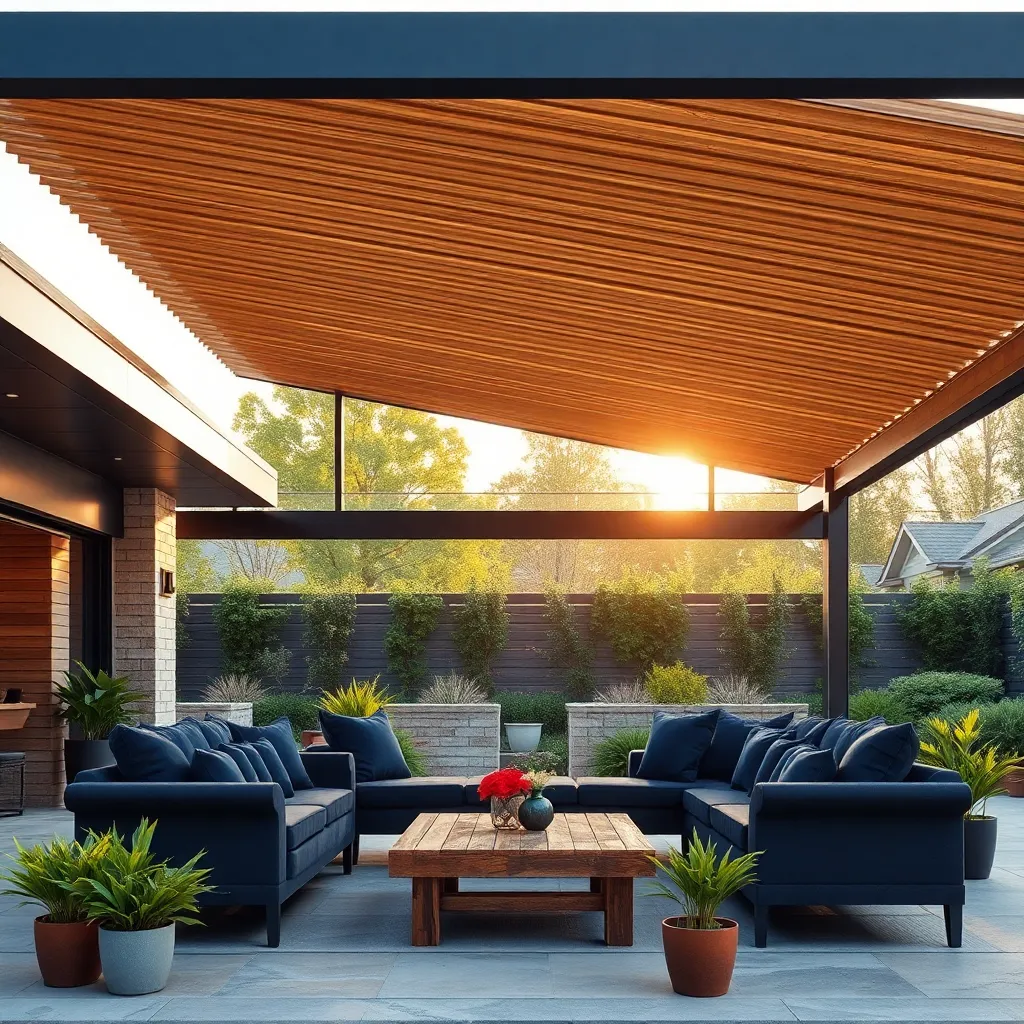
Adjustable louvered systems are a versatile and stylish choice for modern patio covers, offering homeowners the ability to control sunlight and ventilation with ease. These systems typically feature slats that can be rotated to various angles, allowing you to customize the amount of shade or sunlight that filters through. For a durable and low-maintenance option, consider using materials like aluminum, which is both lightweight and resistant to rust. Advanced users might opt for motorized systems that can be controlled via remote or smartphone apps, adding convenience and a touch of modern technology to your outdoor space.
When planning your louvered system, think about the size and configuration of your patio to ensure the structure complements your overall outdoor design. Consider dimensions like the width and length of the louvered panels to fit your specific space needs. It’s also essential to ensure proper installation, which might involve anchoring the system securely to your existing patio structure or ground. Beginners should start with a simple manual system, while those comfortable with DIY projects might explore building a custom frame to support the louvers.
- Use stainless steel hardware to prevent corrosion.
- Regularly clean the louvers to maintain their function and appearance.
These systems not only enhance the aesthetic appeal but also increase the functionality of your outdoor living area.
Blending Modern and Rustic Styles
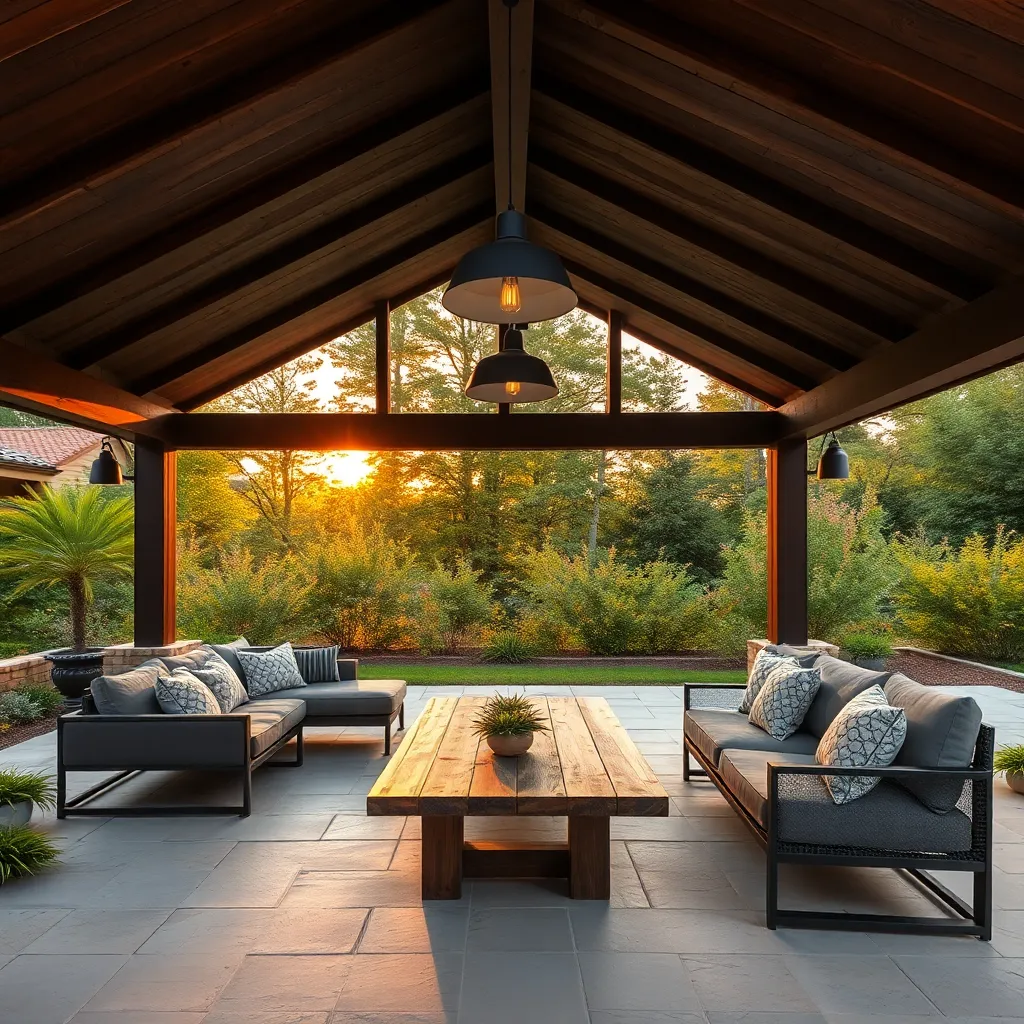
For a harmonious blend of modern and rustic styles in your patio cover, consider using a combination of materials like sleek steel beams paired with warm, natural wood. A popular choice is to use reclaimed wood for the rafters or ceiling panels, which not only adds a rustic charm but is also a sustainable option. Galvanized steel or powder-coated metal can be used for the structural elements, providing a modern contrast that is both sturdy and stylish. This mix of materials creates a visually appealing balance that can be tailored to fit any home’s aesthetic.
Design-wise, incorporate large, open spaces and minimalistic lines to emphasize the modern aspect, while using natural textures and earthy colors to retain the rustic feel. Opt for a clear polycarbonate or glass roof to allow natural light to flood the area, enhancing the blend. Advanced tip: Install integrated lighting such as LED strips along the beams for a contemporary touch that highlights the wood’s texture at night. This approach not only offers functional shelter but also creates a cozy ambiance that encourages year-round use.
Optimizing Space with Compact Designs

To make the most of limited outdoor space, consider compact patio cover designs that are both stylish and functional. One popular option is a retractable awning that not only provides shade but can also be adjusted to suit different weather conditions. Opt for durable, weather-resistant materials like aluminum or powder-coated steel for the frame, and choose a high-quality fabric such as acrylic for the awning itself. These materials are known for their longevity and ease of maintenance, making them ideal for busy homeowners.
For a more permanent solution, consider installing a pergola with a compact footprint. This can be achieved by using slim, vertical posts and a minimalistic beam layout to maximize overhead space. Incorporate clear polycarbonate panels or tensioned fabric for a sleek roof that allows natural light while providing protection from the elements. Advanced garden enthusiasts might consider adding integrated lighting or hanging plants to enhance the atmosphere. Always ensure that the design complements your home’s architecture, using materials like cedar or bamboo for a natural touch that blends seamlessly with the surrounding environment.
Adding Color with Fabric Awnings

Bringing a splash of color to your outdoor space can be as simple as installing fabric awnings. Opt for weather-resistant materials like acrylic or polyester, which are both durable and come in a variety of vibrant shades. For beginners, measuring the area where you plan to install the awning is crucial; ensure it provides adequate shade while enhancing the overall aesthetic of your patio. Consider a retractable design for added flexibility, allowing you to adjust the coverage based on the day’s weather.
For those looking to add a touch of sophistication, consider custom patterns or designs that complement your existing outdoor decor. Advanced DIY enthusiasts can explore motorized options, which offer convenience at the push of a button. When selecting fabric, ensure it has a high UV protection rating to keep your patio cool and protected. Add some decorative elements such as fringe or tassels to the edge of your awning for a unique flair. These colorful awnings not only provide shade but also become a striking feature of your outdoor living area.
Implementing Smart Technology Controls
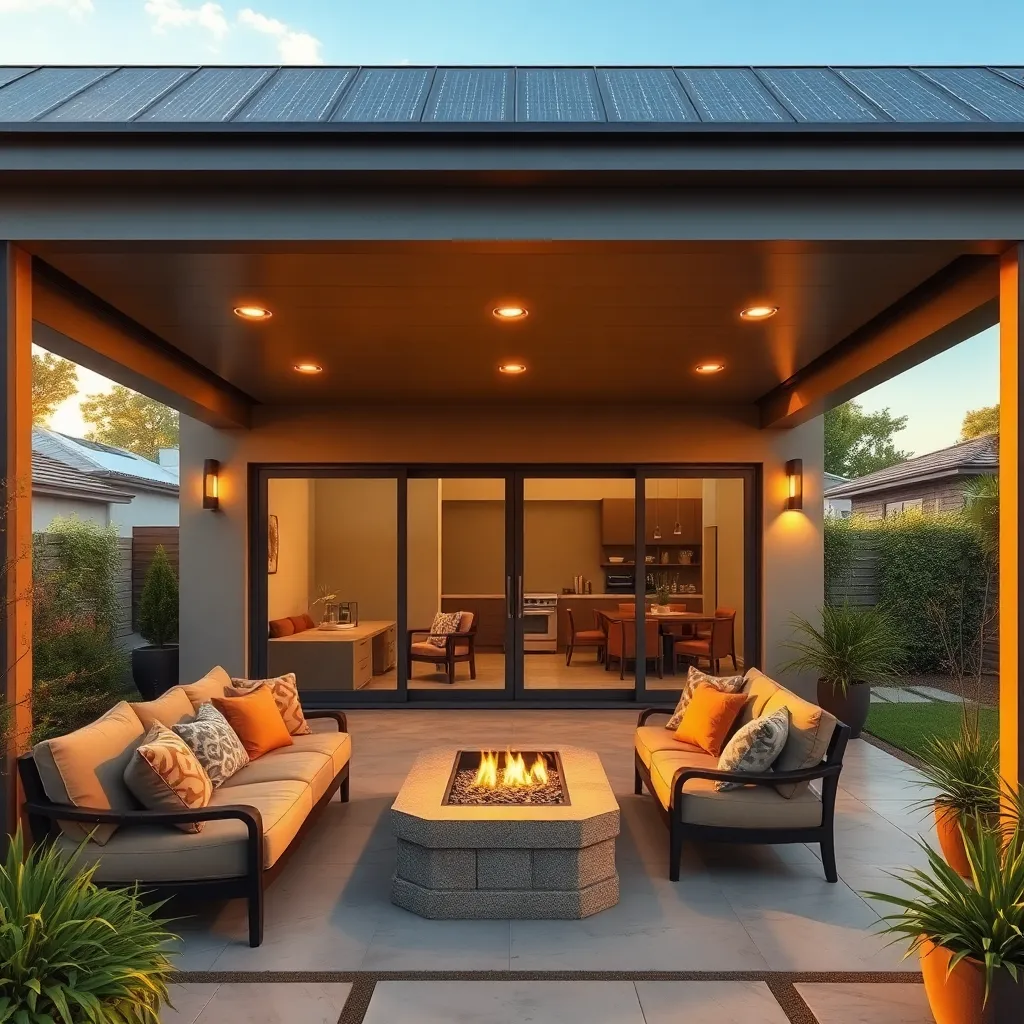
Incorporating smart technology into your patio cover can transform your outdoor space into a cutting-edge haven. Consider installing automated systems that allow you to adjust the shelter’s angle or retractability with a simple tap on your smartphone. For beginners, start with basic systems like motorized awnings that connect to an app, offering ease of use and energy efficiency. For those looking to elevate their setup, integrate sensors that automatically adjust the cover based on weather conditions, ensuring optimal protection and comfort throughout the day.
When selecting materials for your smart patio cover, prioritize durability and compatibility with technology. Opt for lightweight yet robust options like aluminum or treated wood that can withstand weather fluctuations while supporting automation. Ensure the cover’s framework is designed to accommodate wiring and electronic components seamlessly. For a polished look, conceal these elements within the structure. Advanced users might explore integrating solar panels to power the system sustainably, reducing energy costs and enhancing your home’s eco-friendliness.
Conclusion: Creating Beautiful Outdoor Spaces
In exploring the ’12 Modern Patio Cover Designs to Try This Year’, we’ve uncovered a wealth of relationship insights. Each design symbolizes a core concept: communication, adaptability, trust, balance, creativity, resilience, shared goals, respect, intimacy, growth, compromise, and joy. Just as a well-designed patio cover can transform a space, these principles can renew and strengthen your relationship.
Your actionable step today is to choose one concept that resonates most and have an open, honest conversation with your partner about how you can integrate it into your relationship. This small yet significant step can set the foundation for deeper connection and understanding.
Remember, relationships thrive when nurtured with intention and care. Bookmark or save this article now, so you can revisit these valuable insights whenever you need a refresher or inspiration to revitalize your relationship journey.
As you move forward, envision a relationship that not only withstands the tests of time but also flourishes with each passing season. Embrace these concepts, and watch your relationship bloom with joy and fulfillment. Here’s to a future of endless possibilities and harmonious growth together!

